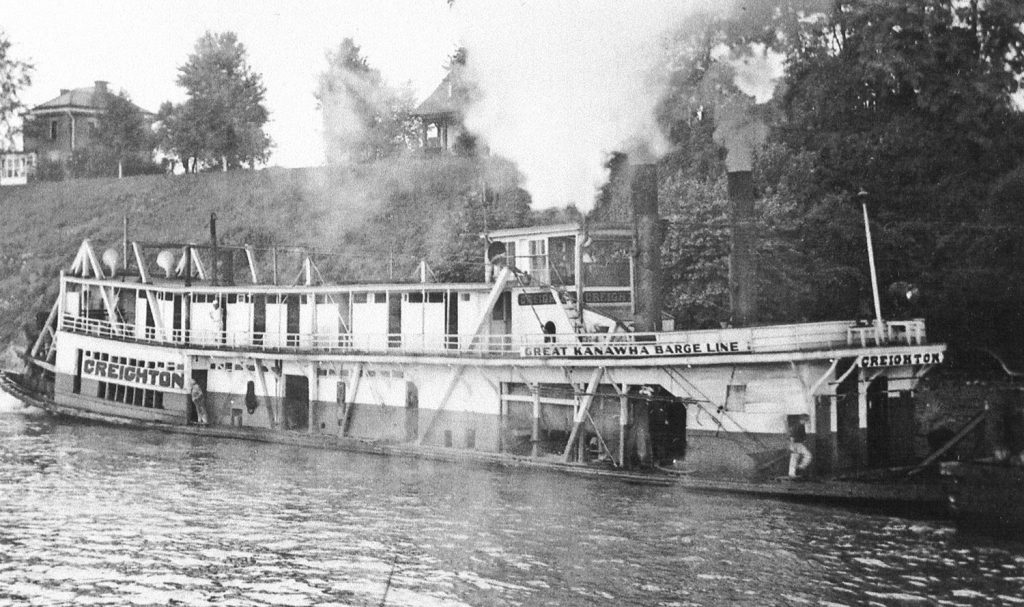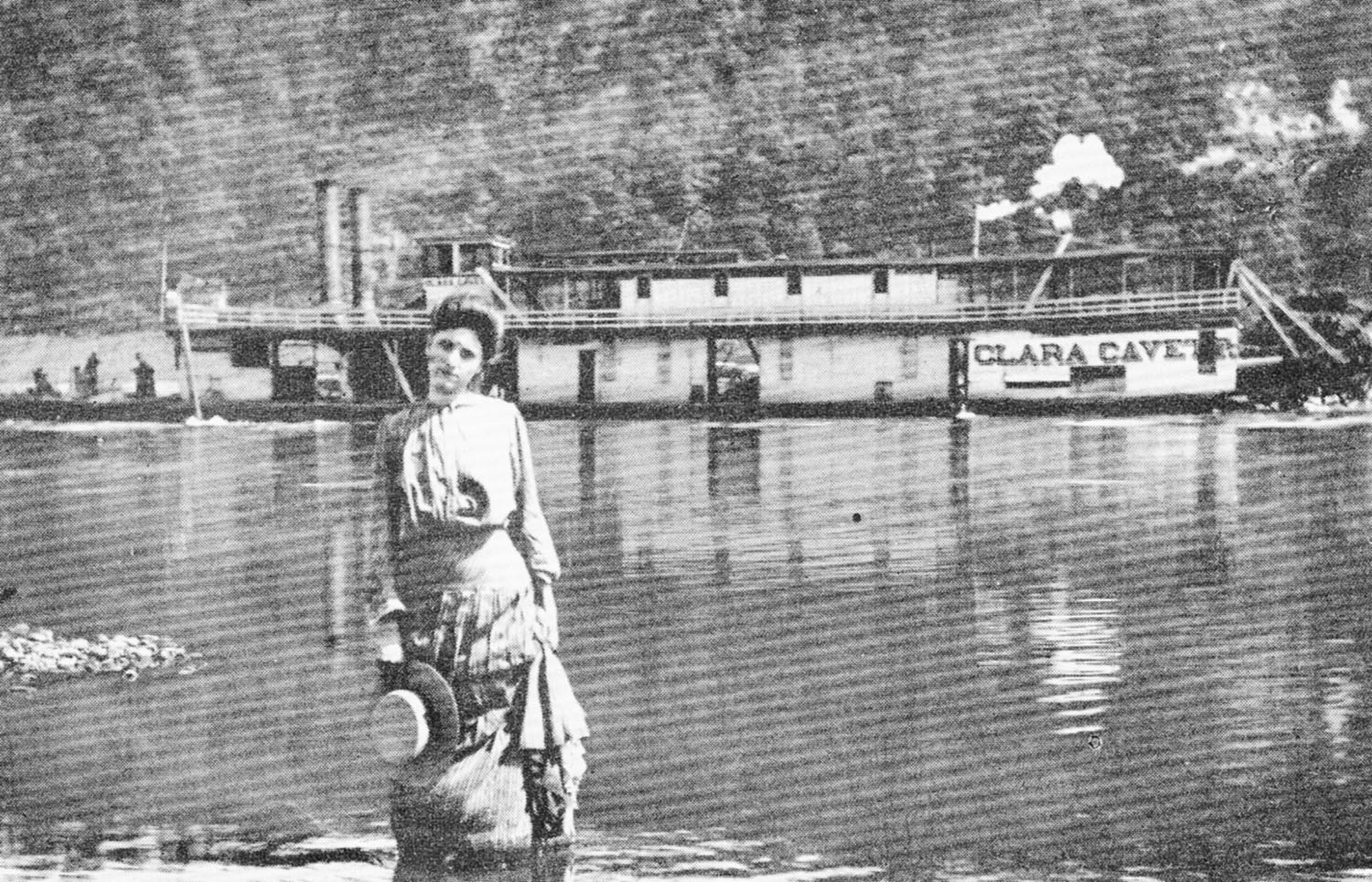This week, the Old Boat Column presents an image of a towboat that was dubbed the “race horse of the Allegheny.”
The vessel originated in 1877 as the Muskingum River packet Mink No. 2, constructed by the Knox yard at Harmar (Marietta), Ohio. Built on a wooden hull measuring 132 feet in length by 21 feet in width, the slim sternwheeler operated daily in the Zanesville-McConnellsville trade from 1877 until 1883 under the command of Capt. Carlton Morgan; the riverboat continued in this run until 1886, with Capt. Diodate Morgan as master.
Eventually, the Mink No. 2 was converted into a towboat, utilized to tow barges of coal and salt for the Pomeroy (Ohio) Towboat Company. The steamboat was later sold to Capt. W.L. Cavett of Pittsburgh.
On September 30, 1894, the boat collapsed a flue while at Pittsburgh, resulting in the death of one crewman. Following extensive repairs and rebuilding, the riverboat was renamed Clara Cavett.
The Pittsburgh Plate Glass Company bought the boat in 1898, with Capt. F.M. Campbell serving as the longtime master; his son worked as a deckhand and eventually earned his pilot’s license.
The Cavett made its debut as a regular vessel on the Allegheny during the summer of 1901. Recently purchased by George Giles, superintendent at the Creighton plant of the Pittsburgh Plate Glass Company, the vessel was assigned to tow sand and gravel barges for a fleet of sand diggers.
Capt. F.M. Campbell was in command with his son, Capt. E.K. Campbell, serving as pilot; he would eventually become river transportation manager of the company. Other crew members were Frank Stuart, who obtained his chief engineer’s license just in time to take over the engineroom of the Cavett when it began regular operations on the Allegheny. Serving as mate was F.C. Campbell with Jack Haught, fireman; Minta Shearer served as both cook and chambermaid for many years.
According to river people, the Cavett was as reliable as clockwork and, throughout its long career, was never involved in a serious accident.
By 1913, time had taken its toll and the steamboat was removed from the lists and tied up. The Cavett was replaced by the Harry No. 2, which later towed the Cavett to the marine ways at Elizabeth, Pa., where it was rebuilt.

In the summer of 1914, the towboat came out as the virtually new Creighton. Retaining the original hull dimensions, the superstructure was entirely new.
The Creighton remained in service with the Pittsburgh Plate Glass Company until the spring of 1929, when, in a deal with the Arrow Transportation Company, the steel-hulled towboat Wacouta was brought from the Tennessee River to replace the Creighton. The faithful steamboat would never again return to its old familiar haunts on the Allegheny and, after a period of operating on the Tennessee and Cumberland rivers, it served in the Kanawha River coal towing trade.
The Creighton was sold in early 1936 to the West Virginia Sand & Gravel Company, which dismantled the venerable vessel. The hull, main and cabin decks became a boathouse for the Charleston Yacht Club at Kanawha City, W.Va.
Caption for top photo: A woman poses for the photographer as the Clara Cavett passes by in 1906. (Keith Norrington collection)




